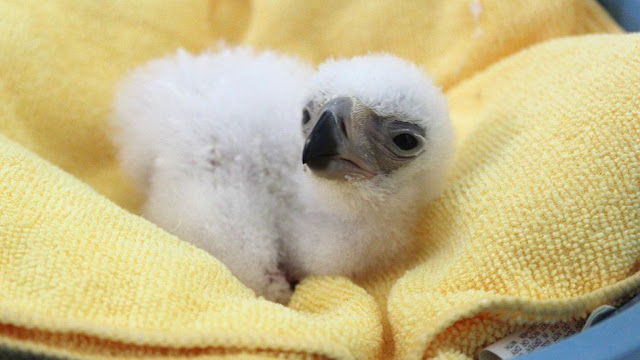The Philippine Eagle was said to be near extinction, yet, as sad as it may seem, people are not that eager to save them.
The Philippine eagle (Pithecophaga jefferyi), also known as the monkey-eating eagle or great Philippine eagle, is a critically endangered species of eagle of the family Accipitridae which is endemic to forests in the Philippines. It has brown and white-colored plumage, a shaggy crest, and generally measures 86 to 102 cm (2.82 to 3.35 ft) in length and weighs 4.04 to 8.0 kg (8.9 to 17.6 lb).
The Philippine eagle is considered the largest of the extant eagles in the world in terms of length and wing surface area.
The Philippine eagle is endemic to the Philippines and can be found on four major islands: eastern Luzon, Samar, Leyte, and Mindanao. The largest numbers of eagles reside on Mindanao, with between 82 and 233 breeding pairs. Only six pairs are found on Samar, two on Leyte, and a few on Luzon. It can be found in Northern Sierra Madre National Park on Luzon and Mount Apo, Mount Malindang, and Mount Kitanglad National Parks on Mindanao.
This eagle is found in dipterocarp and mid montane forests, particularly in steep areas. Its elevation ranges from the lowlands to mountains of over 1,800 m (5,900 ft). Only an estimated 9,220 km2 (2,280,000 acres) of old-growth forest remain in the bird's range. However, its total estimated range is about 146,000 km2 (56,000 sq mi).
Philippine eagles are one of the largest living eagle species and require a huge territory to thrive.
According to a group of scientists who conducted a mapping of these species, there might only have around 800 of the Philippine Eagle left. The Philippine Eagle is now considered critically endangered.
One website states that to protect the eagles, we must protect the monkeys and civets and other animals they need for food, the plants and animals that monkeys and civets feed on, and the trees that Philippine Eagles nest in, which helps protect the other animals that use these trees for food, shelter, and space.
Philippine Eagles do eat monkeys, but they also prey on a whole host of animals, both large and small. They have been known to hunt bats, civets, flying squirrels, and macaques. They also eat birds, including other birds of prey, snakes and lizards. The diet of a Philippine Eagle varies depending on the island it lives on. Prey found in abundance on one island might be scarce or non-existent on another.
Philippine Eagles engage in a number of hunting strategies to score a meal. Sometimes they simply sit and wait until prey is spotted, or they fly from perch to perch through the canopy. They have also been known to probe dense tangles and knotholes in trees in search of something tasty to eat.
One of the most interesting strategies the Philippine Eagle engages in is pair hunting. Simply put, one member of the pair distracts the prey while the other attacks it from behind. Even though Philippine Eagles are large, powerful hunters, any time they go after prey, they are putting themselves in danger. Fast flight through dense forests can result in bumps and scrapes, but even more importantly, prey animals can and do fight back. This is especially hazardous when hunting larger prey whose strength and weight definitely put the Philippine Eagle to the test. Scientists have documented eagles being injured by monkeys and other prey animals. For an animal in the wild, even a seemingly small injury can become life threatening if it gets infected or hinders the bird from flying or hunting.
Killing a Philippine eagle is a criminal offence, punishable by law with up to 12 years imprisonment and heavy fines.
According to The Philippine Eagle Foundation, we should save the Philippine Eagle for the following reasons:
For the environment.
As the species on top of the food chain, the Philippine eagle has a crucial role to play in keeping the gentle balance of the ecosystem in check. It helps naturally regulate species population and provide an umbrella of protection to all other life forms in its territory. An abundant Philippine Eagle population means signifies a healthy forest.
For heritage.
This rare and majestic bird species can be found nowhere else but in the Philippines. Losing the species to extinction would also mean the world losing a precious biological heritage.
For livelihood.
Ensuring the safety of the Philippine eagle population in the upland areas can result to additional source of income for the marginalized communities sharing the forest with the eagles through our biodiversity-friendly initiatives. These projects are funded to strengthen conservation efforts in areas where Philippine Eagles occur.
For cultural impact.
Conservation efforts also bring positive cultural outcomes to many indigenous communities in the upland areas. The Philippine eagle is embedded in the oral histories and other cultural artifacts of several indigenous groups in the country. This indicates that it performs a role in the human production of unique cultures.
Let’s do our part fellas, let’s help save our country’s national bird, the Philippine Eagle.
Cheerio!




Comments
Post a Comment